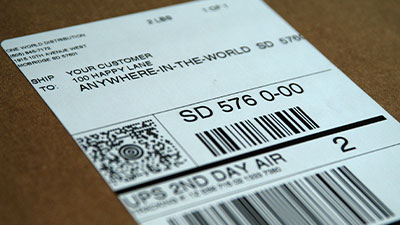Getting your products across borders is a big step for any ecommerce business. The challenge isn’t just shipping—it’s navigating U.S. customs compliance, which can quickly get complex with changing rules, paperwork, and fees.
One World Direct (OWD) has years of experience helping D2C and B2B brands simplify global fulfillment. By leveraging our logistics experts in your 3PL fulfillment process, we help your business stay compliant while delivering unique experiences that boost customer loyalty and profitability.
If you’re looking for clear answers about how to move goods into the U.S. safely and legally, you’re in the right place. This guide breaks down what you need to know about customs clearance so your brand can ship confidently and grow globally.
What is Customs Clearance?
Customs clearance is the official process that goods undergo to enter a country legally. It involves several key steps:
- Inspection: Customs authorities examine shipments to ensure compliance with local laws and regulations. This can include checking for prohibited items, verifying quantities, and ensuring proper labeling.
- Documentation Verification: Essential documents such as the Commercial Invoice, Bill of Lading, and Certificate of Origin are reviewed to confirm shipment details.
- Payment of Duties/Taxes: Duties, taxes, and tariffs must be paid based on the product’s HS Code (Harmonized System Code) and country of origin.
President Trump has recently shaken things up with plenty of new tariffs levied on countries across the world. Check out our knowledge bases for specific countries that apply to your business for more information:
Clearance Meaning in Shipping
Clearance, meaning in shipping, refers to the authorization by customs authorities to release shipments for delivery. Once goods have been inspected and all necessary documentation validated, customs will grant clearance, which allows the goods to proceed to their final destination.
Importance of Proper Classification Using HS Codes
HS Codes play a crucial role during customs clearance. They are standardized codes used internationally to classify traded products. Proper classification using HS Codes ensures:
- Accurate assessment of duties and taxes
- Compliance with import regulations
- Prevention of delays or fines due to misclassification
Proper handling of the customs clearance process is vital for smooth international shipping operations. Understanding these fundamentals helps ensure that your goods move swiftly through customs without unnecessary obstacles.
Working with a capable total landed cost tool will significantly streamline your import operations and enhance your business’s efficiency in global trade.
Understanding Key Terms in Customs Clearance
What does "customs cleared" mean?
Customs cleared" means that goods have successfully passed all regulatory checks and are authorized for entry into the destination country. This status confirms that inspections, documentation verification, and payment of any necessary duties or taxes are complete.
What does “customs clearance processing complete” indicate?
“Customs clearance processing complete” means that all inspections, paperwork, and verifications have been finalized. At this stage, the shipment is ready for release and can proceed to last-mile delivery or pickup.
Why is cleared status important?
Cleared status is crucial because it signals readiness for the final delivery phase. Without this authorization, your goods cannot be distributed to customers, potentially causing delays.
Essential Import Documents for Smooth Customs Clearance
Navigating U.S. Customs compliance for ecommerce requires precise documentation. Here are the critical documents you need to ensure smooth customs clearance:
1. Commercial Invoice
This document lists the goods in detail, including prices, buyer and seller information, and terms of sale. It acts as proof of transaction and helps customs authorities assess duties and taxes.
2. Certificate of Origin
Indicates the country where the goods were produced. It’s essential for determining applicable tariffs and verifying compliance with trade agreements.
3. Bill of Lading (BOL)
A contract between the shipper and carrier detailing the type, quantity, and destination of products. It serves as a receipt of shipment and is crucial for tracking the cargo.
4. Packing List
Provides specifics about how goods are packed, including weight, dimensions, and packaging type. It aids customs officers in identifying and inspecting shipments efficiently.
5. Import/Export Licenses
Required for certain goods that are regulated by government agencies. These licenses ensure that you comply with specific import/export regulations.
6. Customs Declaration Forms
Submitted to declare the value, quantity, and nature of goods being imported. Accurate completion is vital to prevent delays or penalties during customs processing.
Tips on Accuracy and Completeness
Ensuring accuracy in these documents is essential:
- Double-check all entries for correctness.
- Match details across all documents consistently.
- Include thorough descriptions to avoid ambiguity.
Incomplete or inaccurate documentation can lead to costly delays or fines. By meticulously preparing your import documents, you streamline customs clearance processes and support seamless delivery to your customers.
Understanding Import Fees, Duties, and the De Minimis Rule
What are import fees for customs clearance?
Import fees for customs clearance include a mix of taxes, duties, and tariffs collected by the destination country’s customs authority. The total amount you pay depends on your product’s Harmonized System (HS) Code, the country of origin, and the value of the item. Customs officials use these details to determine the correct rates:
- Duties: Charges based on product type and value.
- Tariffs: Extra fees applied to certain countries or categories.
- Taxes: Such as Value Added Tax (VAT), Goods and Services Tax (GST), or sales tax, depending on where your goods are being delivered.
Example: Shipping sneakers from Vietnam to the U.S.? Customs will check the HS Code for footwear and apply the current U.S. duty rate for shoes from Vietnam.
How do trade agreements affect duty rates?
Trade agreements between countries can lower or eliminate duties on qualified products. For example:
- Goods imported under the United States-Mexico-Canada Agreement (USMCA) may qualify for reduced or zero duties if they meet specific rules of origin.
- Check with U.S. Customs and Border Protection (CBP) or consult the USTR.gov website for up-to-date agreement details.
Always verify if your goods qualify before shipping so you can claim any available savings.
When do you pay VAT or similar taxes?
VAT (or its equivalents like GST in Canada or Australia) is often charged on imports at the border. This tax is calculated as a percentage of your shipment’s value, including product cost, shipping, and insurance. Some countries require you to register for VAT/import tax collection if you sell directly to consumers there.
Tip: Make sure your commercial invoice lists accurate values to avoid disputes with customs.
Why is accurate valuation important?
Customs authorities expect you to declare the true transaction value of each import. Undervaluing shipments can lead to penalties, shipment holds, or audits. Double-check that your paperwork matches what was paid by your customer or business.
What is the de minimis rule in ecommerce imports?
The de minimis rule sets a minimum threshold below which shipments enter duty-free with simplified clearance procedures. In the U.S., Section 321 of the Tariff Act allows most imports valued at $800 USD or less per person per day to enter without paying duties or taxes. This makes low-value ecommerce orders easier and more affordable to clear through customs—no complex paperwork required for qualifying shipments.
Accurate classification, valuation, and documentation all play vital roles in smooth customs clearance, especially as regulations evolve and international ecommerce grows.
Importer Responsibilities & Best Practices for Compliance
What are importer responsibilities in customs compliance?
As the importer, you are legally required to exercise reasonable care when classifying, valuing, and declaring your goods. U.S. Customs and Border Protection (CBP) expects you to ensure all import data is complete and accurate before your shipment arrives. This means using the correct Harmonized System (HS) code, providing the true value of your products, and submitting all required documentation.
What happens if goods are misclassified or undervalued?
Errors in classification or valuation often result in serious consequences:
- Fines and penalties: CBP can issue monetary penalties for negligence, gross negligence, or fraud.
- Shipment holds: Incorrect paperwork or suspicious values can cause delays while CBP investigates.
- Customs audits: Repeated mistakes may trigger a formal review of your importing practices.
- Seizure of goods: Shipments may be seized in cases of willful violations or misdeclaration.
How can you maintain best practices for customs compliance?
Staying compliant protects your business from costly surprises. Consider these steps:
- Double-check product details: Confirm HS codes, country of origin, and declared values match what’s on your commercial invoice.
- Keep detailed records: Accurate documentation helps resolve any customs queries quickly.
- Stay updated on regulations: Rules change regularly; subscribe to CBP bulletins or use .gov resources like CBP.
- Work with experienced partners: Trusted logistics providers like One World Direct bring expertise in P2C fulfillment and compliance, helping you avoid pitfalls and keep shipments moving. P2C is an excellent opportunity to avoid tariffs and boost profits with product personalization.
Importing with confidence starts by treating compliance as a core part of your business, not an afterthought. A proactive approach saves time, money, and reputation as your ecommerce brand grows. Choosing the right 3PL partner and total landed cost tool is crucial to take care of oversight and regulations, so you can focus on other initiatives.
FDA Customs Clearance Process for Regulated Goods
Navigating U.S. Customs Compliance for Ecommerce requires understanding additional FDA requirements for importing regulated goods like food, drugs, and cosmetics into the United States.
Steps Involved in FDA Customs Clearance
- Prior Notice Submission: Importers must submit a prior notice to the FDA before the shipment arrives in the U.S. This notice must include details about the product and its origin.
- Product Registration: Certain products need to be registered with the FDA to ensure they meet regulatory standards.
- Labeling Compliance Checks: During customs inspections, FDA officials verify that product labeling, including ingredient lists and health warnings, meets U.S. regulations.
Avoiding Delays with Proactive Documentation Management
- Accurate Documentation: Ensure all documentation is complete and accurate to avoid delays during customs inspection.
- Advance Planning: Submit prior notices well in advance and confirm product registrations to streamline the clearance process.
- Compliance Checks: Regularly review labeling requirements to ensure ongoing compliance and prevent hold-ups at customs.
Non-Tariff Barriers Impacting Ecommerce Imports
Non-tariff barriers are restrictions on imports that go beyond duties and tariffs. These can significantly impact ecommerce businesses. Key examples include:
- Quotas: Limits on the quantity of certain goods that can be imported.
- Licensing Requirements: Mandatory permits for specific products.
- Technical Standards: Regulations ensuring product safety, quality, and compliance.
For ecommerce, understanding these barriers is crucial. For instance:
- Safety Certifications: Electronics and toys often need certifications to meet safety standards.
- Packaging Regulations: Food items must comply with packaging laws to ensure consumer safety.
Early identification of these restrictions in supply chain planning helps avoid delays and ensures smooth customs clearance. Proper documentation and compliance checks are essential to efficiently meeting these non-tariff requirements.
Leveraging Automation & Technology in Customs Clearance
How does automation improve customs clearance for ecommerce imports?
Automation has changed how your business can handle customs by speeding up the process, reducing errors, and offering real-time visibility. The Automated Commercial Environment (ACE) system, run by U.S. Customs and Border Protection (CBP), is at the heart of this transformation.
What is the ACE system in customs?
The ACE system is a secure online portal where importers, brokers, and carriers submit required shipment data electronically. Instead of stacks of paperwork, information about goods—including classification, value, and origin—gets entered digitally. This enables CBP to:
- Analyze shipment details faster
- Run risk assessments before goods arrive
- Make quick decisions about inspections or releases
What benefits does automation bring to your business?
Using automation in customs clearance means:
- Faster processing: Electronic submissions cut down wait times at ports and borders.
- Real-time status updates: Track shipments as they progress through each step so you can confidently plan inventory and deliveries.
- Greater accuracy: Automated data entry reduces manual mistakes that can trigger delays or fines.
- Easier compliance: Systems prompt users for required fields and flag errors before submission.
Why should ecommerce brands care about automation in customs?
Manual customs paperwork often leads to delays or costly missteps, especially when scaling global D2C operations. By leveraging systems like ACE, your business stays compliant while keeping orders moving quickly to customers. Many logistics partners integrate directly with ACE to offer a seamless experience from warehouse to doorstep.
Learn more about the ACE program from U.S. Customs & Border Protection.
Monitoring & Enforcement by U.S. Customs Border Protection (CBP)
U.S. Customs and Border Protection (CBP) continuously monitors all imports, regardless of shipment size or port entry point. Their goal is to ensure compliance with U.S. laws and regulations, maintaining the integrity of international trade.
CBP's Enforcement Actions
CBP conducts inspections to target various violations:
- Antidumping Violations: Ensuring goods are not sold below fair market value.
- Restricted Items: Identifying prohibited or controlled substances and goods.
Compliance Benefits
Proper compliance with CBP regulations reduces the risk of:
- Seizures of goods
- Financial penalties
- Delays in shipment processing
Partnering with trusted logistics providers like One World Direct can help navigate these complexities, ensuring your business stays compliant and minimizes risks. Professional oversight is best to avoid potential fines and delays.
Navigating U.S. Customs Compliance for Ecommerce: Key Takeaways
Ecommerce importers face a complex landscape when managing U.S. customs compliance. Staying informed on documentation, classification, fees, and non-tariff barriers can make or break your supply chain efficiency and customer satisfaction.
- Accurate paperwork and clear product details are essential for smooth clearance.
- Understanding duties, taxes, and de minimis rules helps you avoid surprise costs.
- Compliance with special regulations—like FDA or safety standards—protects your brand from costly delays.
Building a partnership with an experienced logistics provider gives your business practical support and peace of mind. One World Direct’s expertise in global fulfillment means you can focus on growth while we help manage the moving parts of customs.
Have questions about U.S. customs or want guidance tailored to your ecommerce brand? Reach out to One World Direct’s team for help navigating every shipment with confidence.
FAQs (Frequently Asked Questions)
What is customs clearance and why is it important for ecommerce imports into the U.S.?
Customs clearance is the official process that goods undergo to legally enter a country, involving inspection, documentation verification, and payment of duties or taxes. For ecommerce imports into the U.S., proper customs clearance ensures shipments comply with regulations, facilitates timely delivery, and prevents costly delays or penalties.
What does it mean when a shipment is 'customs cleared' or 'customs clearance processing complete'?
When a shipment is 'customs cleared,' it means it has successfully passed all regulatory inspections and documentation checks by customs authorities and is authorized for entry into the destination country. 'Customs clearance processing complete' indicates that all paperwork and inspections are finalized, signaling readiness for last-mile delivery or pickup.
Which essential import documents are required for smooth customs clearance in U.S. ecommerce?
Critical documents include the Commercial Invoice, Certificate of Origin, Bill of Lading (BOL), Packing List, Import/Export Licenses, and Customs Declaration forms. Each document verifies shipment details such as product description, origin, quantity, and value to facilitate efficient customs processing. The accuracy and completeness of these documents help prevent delays or fines.
How do import fees, duties, and the de minimis rule affect ecommerce shipments entering the U.S.?
Import fees such as taxes, duties, and tariffs are applied based on product classification using HS Codes and country of origin. Trade agreements may influence duty rates. Additionally, Section 321 Tariff Act allows shipments valued at $800 or less per person per day to enter duty-free with simplified procedures under the de minimis rule. Accurate valuation is crucial to avoid penalties.
What are an importer's responsibilities to ensure compliance with U.S. customs regulations?
Importers must exercise reasonable care in accurately classifying, valuing, and declaring goods to comply with customs regulations. Misclassification or undervaluation can lead to fines or shipment delays. Partnering with experienced logistics providers like One World Direct (OWD) helps ensure expert guidance for maintaining compliance throughout the shipping process.




